NIL
Report: President Donald Trump considering executive order on NIL after Nick Saban meeting
After meeting with former Alabama coach Nick Saban this week, President Donald Trump is considering an executive order “that could increase scrutiny” of NIL payments and the future of college athletics, the Wall Street Journal reported. Saban introduced Trump ahead of Thursday’s commencement address in Tuscaloosa. During their meeting, which took place Thursday night, Saban […]
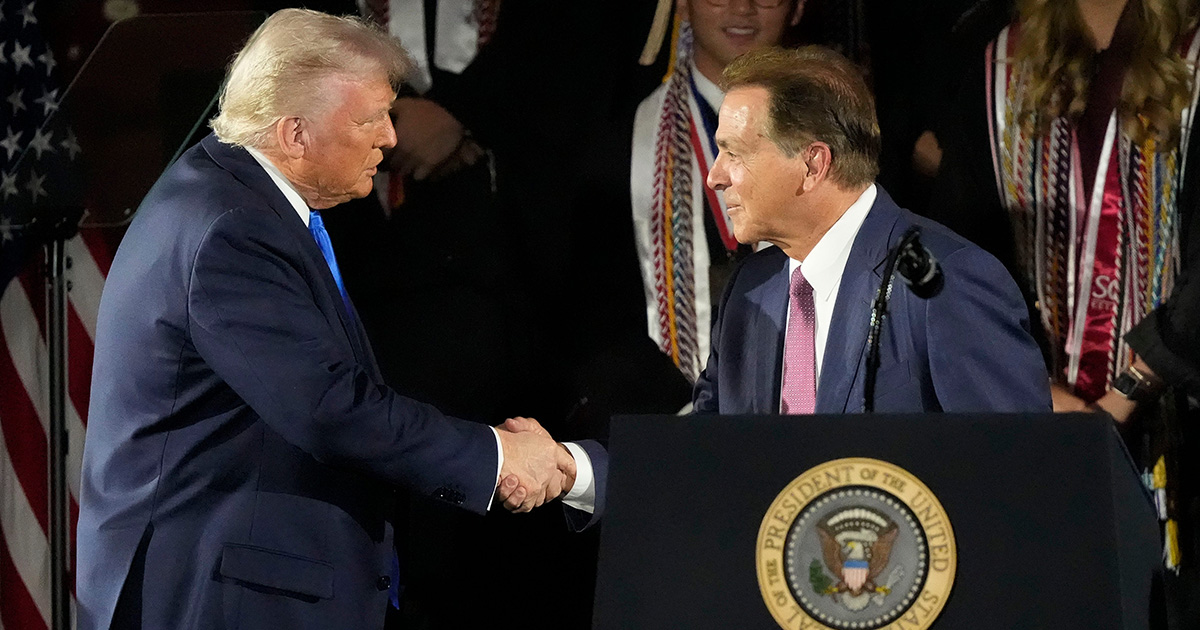
After meeting with former Alabama coach Nick Saban this week, President Donald Trump is considering an executive order “that could increase scrutiny” of NIL payments and the future of college athletics, the Wall Street Journal reported. Saban introduced Trump ahead of Thursday’s commencement address in Tuscaloosa.
During their meeting, which took place Thursday night, Saban expressed concern about the amount of NIL dollars added to the college sports landscape, according to the Wall Street Journal. The legendary coach said he thought it was damaging college athletics. Trump agreed and said he would consider drafting an order, telling aides to start studying what that could look like.
Saban’s point was more about “reforming” NIL, the Wall Street Journal said, and creating more of an even playing field. That echoes similar comments he made publicly about the need for competitive balance as the space continues to shift.
NCAA leadership has taken multiple trips to Capitol Hill for discussions about NIL and college sports. Last month, leaders from across collegiate athletics took a trip to Washington, D.C. for College Sports Day. Saban has also spoken in front of Congress about regulation, notably doing so in a roundtable hosted by Sen. Ted Cruz (R-TX) last year.
NCAA president Charlie Baker and SEC commissioner Greg Sankey also spoke multiple times about the need for national legislation to help regulate NIL. Saban also did so on ESPN’s College GameDay this past football season, calling for stability with both NIL and the transfer portal.
“I personally think we probably need some national legislation to make the rules the same in all the states because right now, different rules govern each state in terms of what you can and can’t do with players,” Saban said in December. “I think it’s up to the NCAA to sort of [say], we’ve gone overboard a little bit to give these players all these opportunities. You have to have contracts.
“If you have a contract, you have a responsibility, and you have to fulfill the contract. … It’d be for coaches and players, and the players should make money. I’m not against the players making money. They should make money. But they should have a contract and a responsibility to fulfill, just like a coach does, and there’s some penalty if you leave a team and you have a contract. Just like most coaches have buyouts, and they pay them if they leave. … I think the NCAA is afraid of lawsuits, so they need some legal protection from litigation for this to get fixed.”
NCAA also waiting on House settlement decision
News of the executive order consideration comes as the college sports world waits for a decision on the landmark House v. NCAA settlement. The agreement would transform the landscape and usher in the revenue-sharing era if fully approved. In addition, athletes would have to report any deals worth more than $600.
Judge Claudia Wilken issued an order last week delaying final approval of the settlement, telling attorneys to change verbiage regarding roster limits in the agreement. She gave them two weeks to do so, and that deadline is coming up May 7.
During the April 7 hearing in the U.S. District Court for the Northern District of California, Wilken told attorneys for both the plaintiffs and NCAA to address her concerns about roster limits within one week. Lawyers then filed a supplemental brief, but did not change the verbiage around roster limits after Wilken suggested phasing them in or grandfathering athletes currently on rosters.
In her order, Wilken said she would deny settlement approval if the roster limit changes are not made. She added that while the settlement received preliminary approval, that did not mean final approval was a certainty.
NIL
How Clemson helped pave the way for the EA College Football series return
The road to bringing college football back to video games was a decade-long journey, filled with numerous complications. If it weren’t for Clemson, perhaps it wouldn’t have happened at all. Just ask Ben Haulmiller. Long before College Football 25 was the highest-selling sports video game in the history of the United States, one of the […]
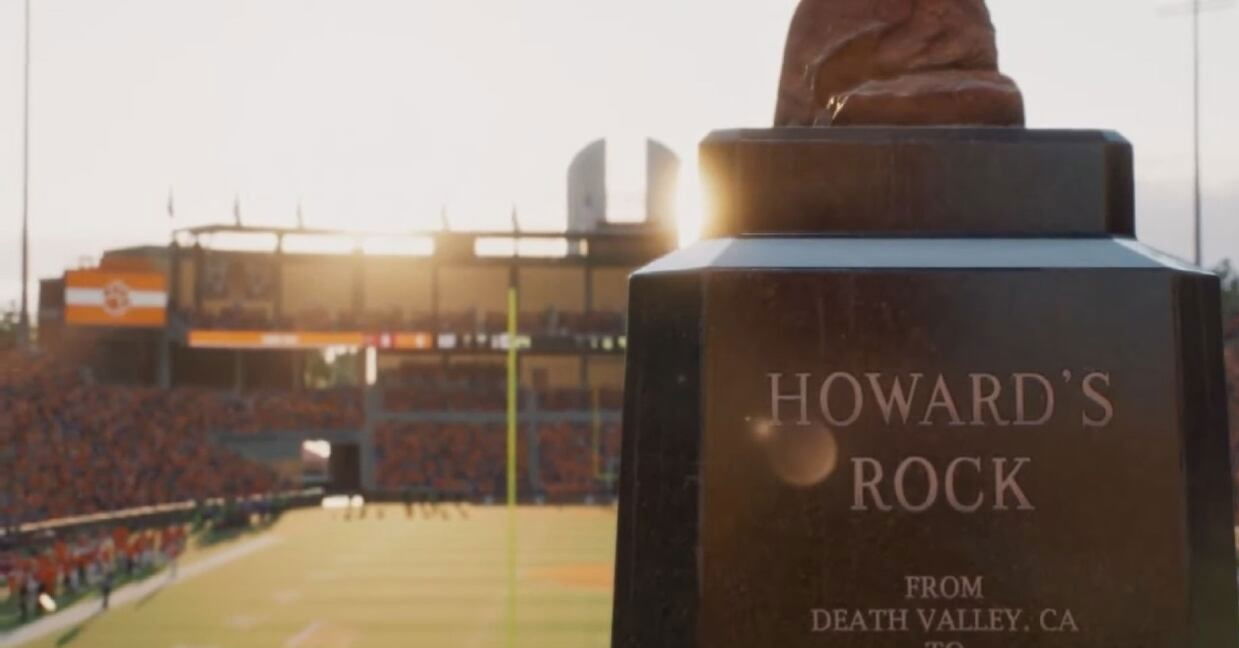
If it weren’t for Clemson, perhaps it wouldn’t have happened at all.
Just ask Ben Haulmiller.
Long before College Football 25 was the highest-selling sports video game in the history of the United States, one of the many tasks to accomplish to get the game in development was bringing the schools on board.
There needed to be proof of concept, or something that could be a minor selling point to enticing the rest of the universities to take action. One of the key issues was hesitancy due to the uncertainty of how to create a video game without having the players in it. At the time, Name, Image and Likeness compensation was not a thing, and a lawsuit over use of student-athletes’ NIL brought the game to a halt after the 2013 edition.
In NCAA Football 14, players were listed by their position and jersey number. Tajh Boyd was “QB10,” and Sammy Watkins was “WR2.”
Was there a way to show this concept could work?
Enter the Madden Franchise.
At the time, Madden was the king of football video games, and “Madden 20” was set to unveil a unique aspect of its career mode, particularly when it came to quarterbacks. The player could select from a variety of programs, including Clemson, Texas, Florida, LSU, Oklahoma, USC, Florida State, Miami, Oregon, and Texas Tech.
You would assume control of the quarterback in the College Football Playoff, playing in the semifinal and national championship before heading to the NFL.
Nobody knew it at the time, but those 10 programs were the stepping stones to eventually bringing back college football to video games. On the “Two Right Turns” Podcast, Haulmiller, EA Sports’ principal game designer, broke down how Clemson, along with nine other universities, stepped up to pave the way for CFB 25.
“Honestly, too, it’s a big reason why we’re even back is going back to when we first put in a kind of a pilot program for college in Madden,” Haulmiller said. “There were 10 schools you can go through, and you can kind of work your way from college to the NFL and superstar mode. And we selected 10 schools, and we were working with them, but a lot of schools were hesitant to work with us because we were still in the dark ages of how can we work with making a video game without having players in them, and not infringing on player rights, and all of those.”
As it turns out, Clemson was the first one of the bunch to step up to the plate. In Haulmiller’s eyes, the Tiger program had recognized that this small mode in an NFL-based game could prove to be incredibly valuable.
Once Clemson jumped on board, it was only a matter of time before other top programs wanted in on something special.
“And honestly, Clemson was the first school to step up and say, we want to do this with you guys,” Haulmiller said.” “And now you have a school in your back pocket, you can say, Hey, everybody else, Clemson’s on board, are you on board too? Let’s go. And it really got the ball rolling to get those schools to sign up to be in the game and then prove out to schools that we can do this in a way that if we don’t have player rights, we’ll be able to make it without players and be fine. But if we do have players, man, we can really make some magic here.”
Eventually, that source of magic would come. On July 1, 2021, the NIL floodgates were opened, and the possibility of using players in a college football video game was no longer a distant dream.
In many ways, Haulmiller believes Clemson’s trust in the process is what laid the groundwork for such a project to happen. At the time, it seemed that Madden’s small mode was the only way fans could play as college teams in video games again.
Little did they know, those 10 schools were an early demo for what was to come. Years later, that groundwork turned dreams into reality.
“So it’s that relationship we have with schools and specifically Clemson here,” Haulmiller said. “I mean that’s why we’re talking today in some way, shape, and form is because way back a few years ago, Clemson had the foresight to say, this is something that matters. This is maybe a way we can get the game back. And so here we are.”
Subscribe to our channel for exclusive content and updates!
NIL
The road ahead after the NCAA settlement comes with risk, reward and warnings
Two days after the approval of a groundbreaking $2.8 billion antitrust settlement, thousands of athletic directors and department personnel traveled to Orlando, Florida, for the annual National Association of Collegiate Directors of Athletics convention. The hot topic, of course, was the influx of changes both threatening and beneficial for schools across the country. According to […]
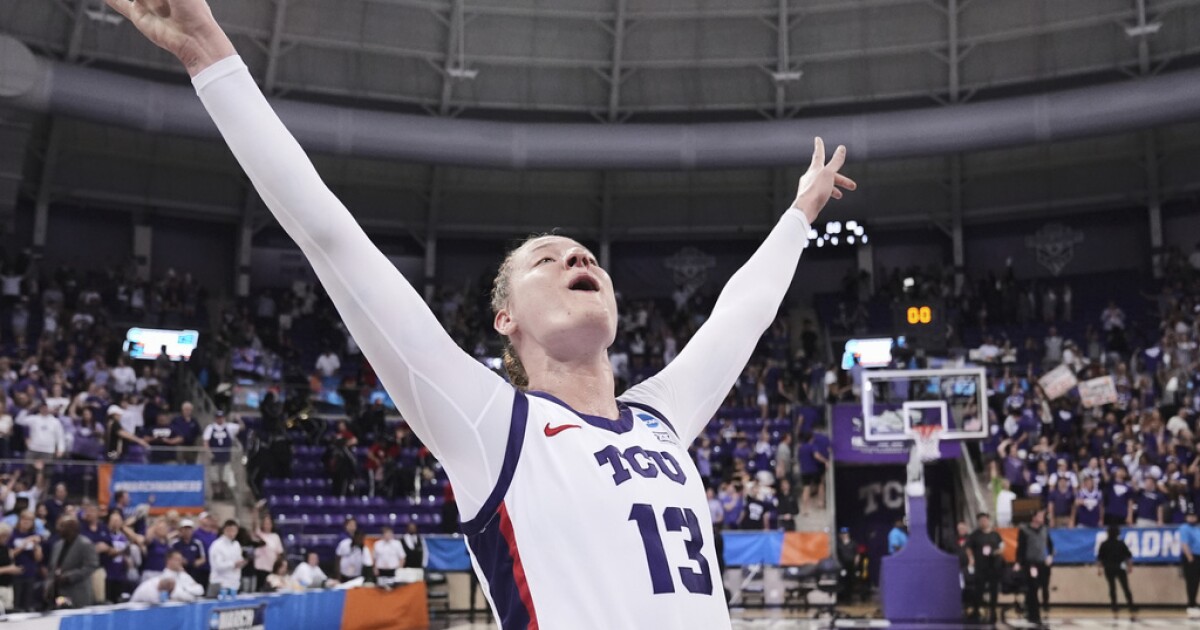
Two days after the approval of a groundbreaking $2.8 billion antitrust settlement, thousands of athletic directors and department personnel traveled to Orlando, Florida, for the annual National Association of Collegiate Directors of Athletics convention.
The hot topic, of course, was the influx of changes both threatening and beneficial for schools across the country. According to NCAA President Charlie Baker, approval of the settlement may be the biggest change in college sports history. On July 1, schools that opt in to the settlement will embark on a new era of revenue sharing, changing the game both on and off the field.
Rewards
A handful of convention attendees breathed a sigh of relief on Friday night when U.S. District Judge Claudia Wilken announced her decision. It’s a quick turnaround and a period of trial and error is anticipated, but Division I athletic directors welcomed the news.
“The best thing is clarity,” UCLA athletic director Martin Jarmond said. “The best thing about July 1 is we now have clarity on the rules of engagement, what we’re allowed to do, how we can move forward. Does it solve everything? No, it doesn’t. But when you have clarity, you can operate more efficiently and effectively.”
Kentucky AD Mitch Barnhart was relieved to get the agreement in hand.
“We’ve been trying for so long to be part of this,” Barnhart said. “Maybe, just maybe, on July 1, we’ll sort of all know where we are on this one.”
Barnhart added that the College Sports Commission, an entity that will enforce compliance and set market value for NIL deals, will be a major positive.
“The College Sports Commission and the way that is coming around gives us guardrails and enforcement in a way that we can move forward collectively, together, for college sports,” Barnhart said.
Risks
In a settlement where high-revenue sport athletes have the most to gain, Title IX has emerged as a topic to watch.
The 75-15-5-5 formula has emerged as a popular revenue-sharing formula, meaning that schools are likely to allocate 75% of revenue-share funds to football, 15% to men’s basketball, 5% to women’s basketball and the remaining 5% dispersed to other programs. If a school spent the full $20.5 million allowed this coming year, that would mean a breakdown of $15.4 million for football, $3.1 million for men’s hoops and about $1 million each for women’s hoops and everyone else.
Montoya Ho-Song, an attorney for Ackerman LLP who specializes in higher education issues, expects Title IX lawsuits to come, just like one filed this week by eight female athletes. The area has shifted again under President Donald Trump, with guidance suggesting the federal government won’t hold schools to rigid requirements to distribute proceeds equitably between men and women.
“There are definitely going to be legal challenges related to this revenue-sharing model. I always tell my clients, look, your student athletes’ perceptions are their reality. If they think that they are not being treated equally, they will raise those concerns,” Ho-Song said.
She warned that the 75-15-5-5 formula shouldn’t be a one size fits all and suggested dividing revenue based on how it comes in isn’t a valid argument. The majority of rev-share funds going to football and basketball programs, especially when coupled with losing records, will inevitably stir the pot.
“Just because there is a 75-15-5-5 budget breakdown, that does not mean that that’s going to work on all campuses,” she said. “The analysis under Title IX is making sure that it is available and everyone has the same type of access to non-grant funds. So, you do have to figure out a way to creatively divvy up those funds, but always keep in mind, if someone feels as if they’re not being treated correctly, then that is always a legal risk.”
Warnings
Attorney Mit Winter, a college sports law specialist with Kennyhertz Perry, said it is paramount that athletic departments present an organized, united front.
Since the launch of name, image, and likeness compensation four years ago, Winter said, he has encountered several instances where athletic departments are giving conflicting statements and numbers to current and prospective athletes. That can lead to legal headaches, too.
“You need to have a plan that everyone is on board with and that everyone knows,” Winter said. “As a school, you don’t want to have a situation where five different people are talking to an athlete about how much they’re going to pay him or her. I think that needs to be much more formalized. The coach, assistant coaches, GM, everybody needs to be on the same page.”
St. Bonaventure men’s basketball general manager Adrian Wojnarowski and coach Mark Schmidt know exactly what their roles are — and aren’t.
“I will never talk to a player or a parent or an agent about playing time, their role,” Wojnarowski said. “During the season, if someone is disappointed in playing time and they call, the only conversation I’m having with a family member is supporting the head coach, supporting the coaching staff. And in the end, that’s a conversation for their son to have with the head coach. Then economically, we have to have one clear message in negotiations and finances.”
Impacts
There are concerns that the revenue-sharing era will have multiple impacts on college rosters.
Few athletic directors were willing to talk in any detail about plans for their campuses, but some of the moves have already begun in the search for more money to fulfill the details of the NCAA settlement: UTEP dropped women’s tennis, Cal Poly discontinued swimming and diving, Marquette added women’s swimming and Grand Canyon shuttered its men’s volleyball program. The athletic director at Cal noted the school expects to lose about 100 athletes.
Just how many of the so-called non-revenue sports — the ones that often feed U.S. Olympic teams — will be affected is also a concern. And many programs will need to find a niche that works for them, even if that means not consistently contending for national championships.
NIL
Greg McElroy disputes the belief that roster limits will offer more parity to college football
There are several significant changes coming to college sports thanks to the House settlement. One of those that’s been widely discussed is that there are now going to be limits to the size of rosters. There’s, of course, plenty of debate about this. That includes those concerned it’s taken away opportunities, particularly from walk-ons and […]
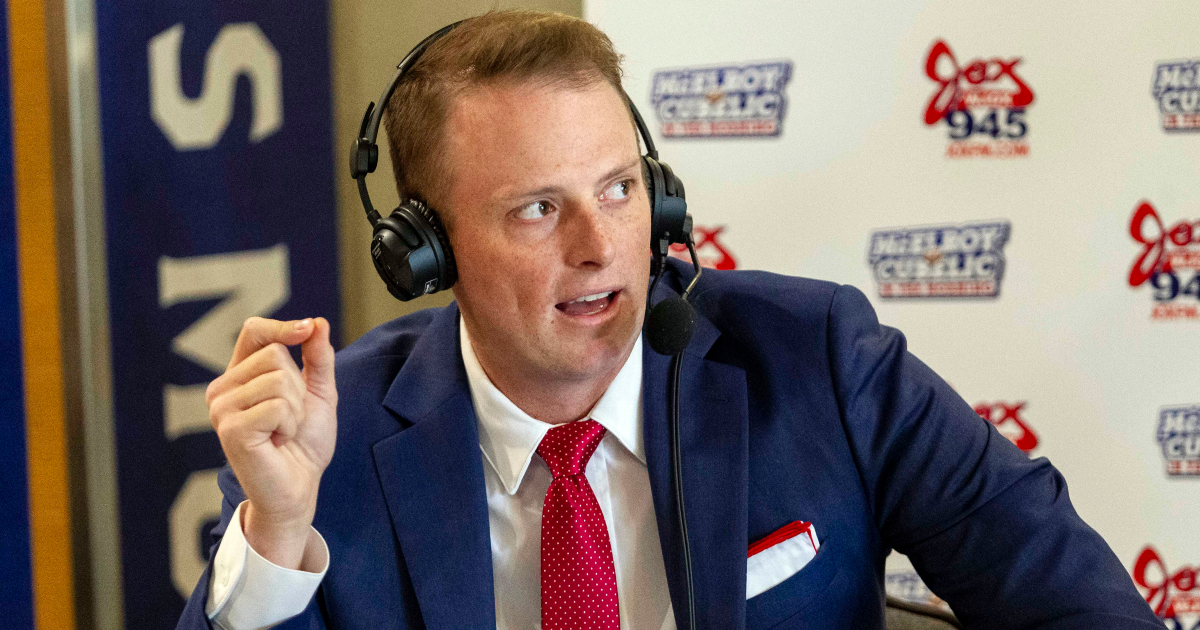
There are several significant changes coming to college sports thanks to the House settlement. One of those that’s been widely discussed is that there are now going to be limits to the size of rosters.
There’s, of course, plenty of debate about this. That includes those concerned it’s taken away opportunities, particularly from walk-ons and those who think the move will bring more parity to college football. However, one person who pushed back on that idea is Greg McElroy. On his show Always College Football, the analyst explained why he doesn’t think roster limits are actually bringing parity to the sport.
“So, will there be more parity as a result of the roster limits and the new House settlement? That’s the assumption,” Greg McElroy said. “Do I think that’s the reality? Probably not. I really don’t.”
In college football, the House settlement sets roster limits at 105 spots. Other sports were hit too, including men’s and women’s basketball (15), baseball (34), men’s and women’s soccer (28), softball (25), and volleyball (18). Notably, as part of the settlement, it was agreed to phase in roster limits.
“I think the best teams are still going to be the best teams. Now, will they annually be the best? Are there going to be years in which there’s going to be outliers and teams decide to go all in and maybe the stars align and they can make a run? Sure. But I still think those teams with the deepest pockets, the best resources, the best facilities, the best fan support,” McElroy said. “Those are still going to be the teams that are competing annually at the top of college football. So, I will be curious to see how this House settlement affects the quality of play and the parity that we experience right now in the sport.”
The counterargument to McElroy is that these roster limits are going to test teams’ depth. In an increasingly long season with the Transfer Portal already showing its impact on depth, these smaller rosters would be another hit as teams battle injuries. That, hypothetically, would create more parity.
Parity is something that’s been a bit of an issue in college football since the beginning of the College Football Playoff. In 11 seasons of the Playoff, including one where it was expanded to 12 teams, there have been six national champions coming from three conferences. Alabama, who notably has the most national championships in the Playoff era, also won two of the final three in the BCS era. It has, for the most part, been a limited field of realistic potential national champions.
The House settlement is going to go well beyond roster limits, which will again shake up college athletics. That, most notably, includes revenue sharing, the creation of an NIL clearinghouse to review third-party deals, and the creation of a new enforcement entity.
NIL
ACC/SEC Challenge, NCAA rule changes, Blue Devil mocked high in 2026 NFL mock draft and more
Upon the release of the 2025 ACC/SEC Challenge, the Duke basketball program now knows its opponent, and it puts the Blue Devils in the discussion for the most difficult non-conference schedule in college hoops next season. Beyond the Duke program, college basketball altogether is likely on the verge of some drastic rule changes. For Blue […]
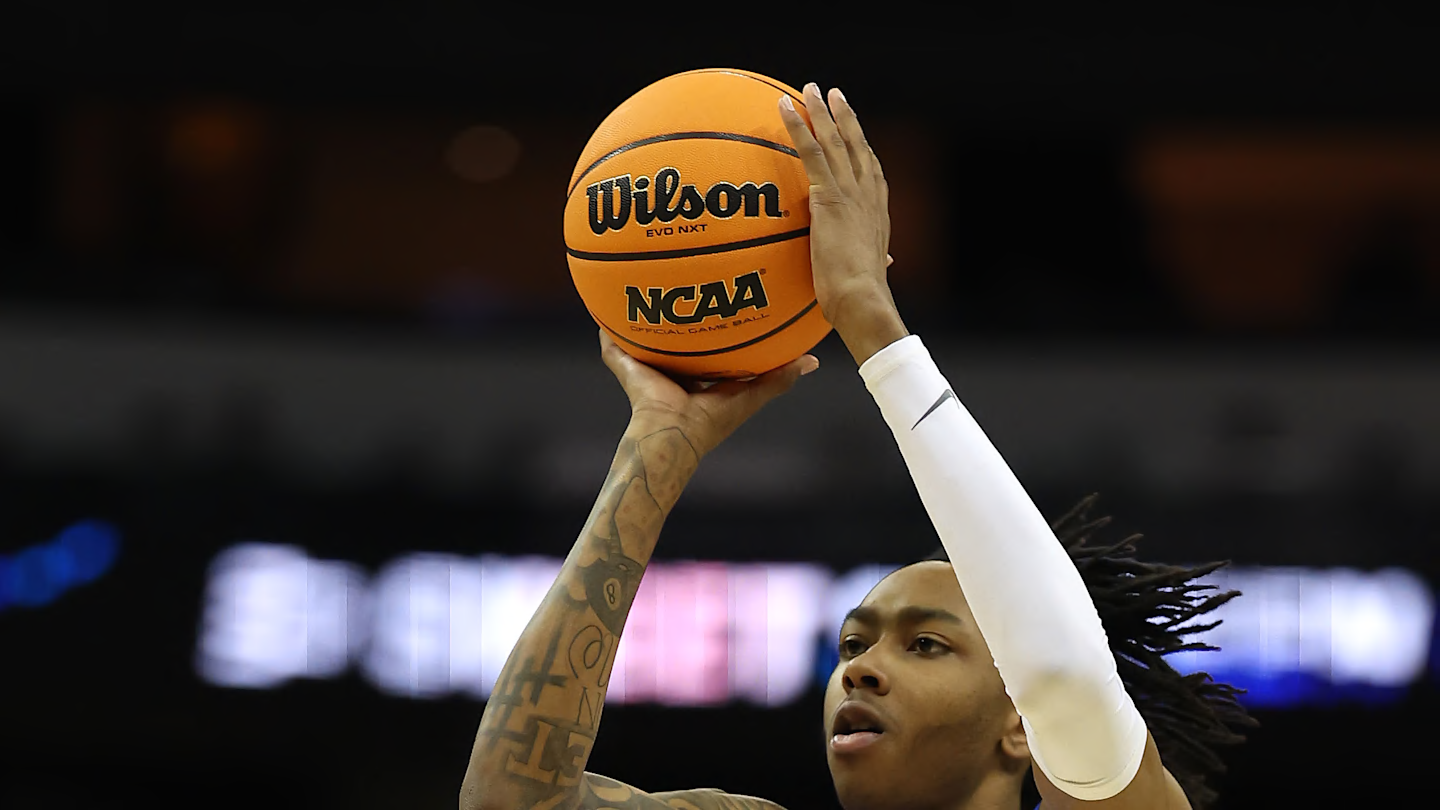
Upon the release of the 2025 ACC/SEC Challenge, the Duke basketball program now knows its opponent, and it puts the Blue Devils in the discussion for the most difficult non-conference schedule in college hoops next season. Beyond the Duke program, college basketball altogether is likely on the verge of some drastic rule changes.
For Blue Devil football, one returning senior corner is seen as a prime 2026 NFL Draft prospect in this mock draft.
Here’s your latest round-up of Duke Blue Devils news.
ACC/SEC Challenge closes Duke basketball’s insane non-con slate
The Duke basketball program was already set to go through a grueling non-conference schedule, and the icing on the cake was the release of the 2025 ACC/SEC Challenge, where it was revealed that the Blue Devils will be taking on the reigning national champion Florida Gators at Cameron Indoor Stadium on December 2nd. This marquee matchup has the potential to be the best game in college basketball up to that point in the season, as both squads could be sitting in the top five of the AP Poll. Florida boasts likely the best frontcourt in the sport heading into the 2025-26 campaign as the program returned Thomas Haugh, Alex Condon, Micah Handlogten, and Rueben Chinyelu, all key contributors from last season’s title team. Todd Golden is also bringing in two star guards via the transfer portal to replace Walter Clayton Jr. and Denzel Aberdeen in Xaivian Lee from Princeton and Boogie Fland from Arkansas. With Duke’s premier non-con slate now finalized, it makes one wonder what a good record would be for the team through that schedule. Facing seven teams ranked in the ESPN preseason top 25 rankings from November to February, a 4-3 record would be just fine, although it wouldn’t look great at first glance.
Major rule changes coming to NCAA
The NCAA Rules Oversight Panel met this past Tuesday to discuss new rules and regulations to “enhance the flow of the game in men’s basketball.” One of the significant changes the committee made was allowing a coach’s challenge next season, where a program may challenge a call once during a game, provided it has a timeout. The calls that can be challenged are out-of-bounds calls, basket interference/goaltending, and whether a secondary defender was in the restricted arc. In addition to coaches having one challenge, if a coach successfully completes a challenge in a game, they will receive an additional challenge to use at any point through the remainder of the game, including overtime. Beyond the changes that have already been made, there is also ‘positive momentum’ moving towards men’s college basketball switching to four quarters as opposed to two halves. As the only major league of basketball in the US that uses two halves, this change makes a lot of sense. It’s unclear when this change will be made, but it could occur very soon.
Duke football corner mocked as near top ten 2026 NFL Draft picks
Duke football rising senior cornerback Chandler Rivers is viewed as one of the best defensive players in college football next season, as ESPN ranked Rivers as the 7th-best defensive back in college football heading into the 2025 campaign, and there’s a real chance that he could be the best secondary piece in the nation as a senior. A 2026 NFL mock draft done by CBS Sports NFL analyst Ryan Wilson sees Rivers having a standout season, as he has the corner slotted as the 11th overall pick to the Los Angeles Rams in his mock version 1.0. Rivers is the first corner off the board and the fifth defensive player overall in Wilson’s mock. Rivers comes back for a Duke team that is looking to repeat as one of the top defenses in college football, as Rivers totaled 54 tackles, eight pass deflections, a sack, two forced fumbles, and three interceptions in 2024. The Beaumont, Texas native finished the season tied for the team lead in both pass deflections and forced fumbles while also finishing second on the squad in interceptions. He also gave up just 13 completions all season and allowed the third-lowest completion percentage in all of college football.
NIL
Tommy Lloyd discusses Arizona Wildcats men’s basketball’s ‘moving parts’ since 2024-25 ended
Following his team’s loss to Duke in the Sweet 16 in late March, Tommy Lloyd went through the customary postgame press conference where he was accompanied by Jaden Bradley, Caleb Love and Henri Veesaar. Only one of those players is back for Arizona, one off to begin his pro career and the other transferring out. […]
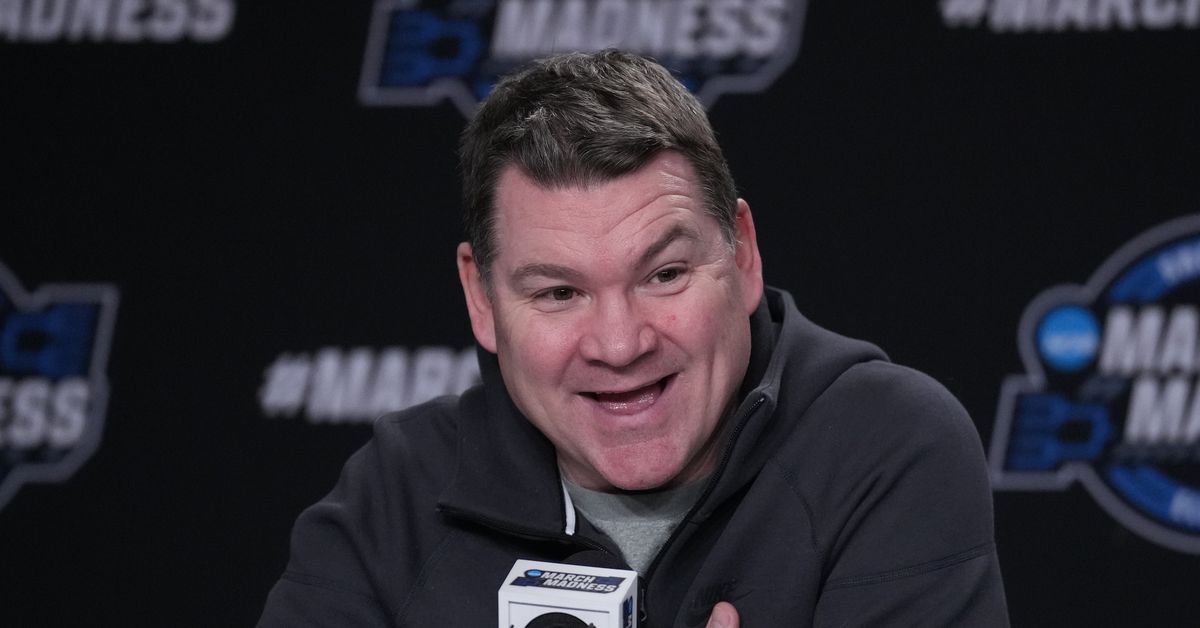
Following his team’s loss to Duke in the Sweet 16 in late March, Tommy Lloyd went through the customary postgame press conference where he was accompanied by Jaden Bradley, Caleb Love and Henri Veesaar. Only one of those players is back for Arizona, one off to begin his pro career and the other transferring out.
The Wildcats only return four scholarship players from last year’s 24-13 team, with Love one of three setting out on a pro career and Veesaar part of a quartet set to play elsewhere in college next season. In their place are seven newcomers, including the largest freshman class of the Lloyd era.
Lloyd and his staff constructed this roster as the NIL market for college basketball exploded this spring, with numerous players landing 7-figure deals ahead of restrictions that would come with the NCAA/House settlement that was approved last week. Throw in putting together another arduous nonconference schedule, while hiring a new assistant and getting set to coach Team USA’s U19 squad in the FIBA World Cup and there hasn’t been much downtime since the 2024-25 season ended.
“It’s college basketball, there’s a lot of moving parts in an offseason now,” Lloyd said Thursday, his first public comments since the Sweet 16 loss. “It makes for a pretty eventful few months, but you work yourself through it, and you’re trying to do the best job to set your next team up for success. You’re all in, fully engaged, from basically April through through May into June. And then hopefully, by that point you’ve kind of got a little more certainty on how things are going to look, and you’re ready to operate accordingly.”
Lloyd has led Arizona to 112 wins in his four seasons, reaching the NCAA Tournament each year and making three trips to the Sweet 16. The Wildcats finished fourth in their first season in the Big 12 Conference and reached the conference tournament final where they lost to NCAA tourney finalist Houston.
Here’s what Lloyd had to say about the various “moving parts” for Arizona specifically and college basketball in general:
The 2025-26 roster
Back for next season are seniors Tobe Awaka, Jaden Bradley and Anthony Dell’Orso and junior Motiejus Krivas, who combined to play 37.3 percent of the minutes last season and produce 35.1 percent of the scoring. All four committed to returning shortly after 2024-25 ended, though Bradley did go through the NBA Draft process for the second year in a row.
“Those are guys that they expressed a real strong desire to come back,” Lloyd said. “So we just sat down with them and figured it out. The formula, if you can get three or four good returning players, that part of your rotation back, I mean, I think that’s a great foundation to build on. And I think we’ve kind of been able to do that each of the past four seasons. We’ve had enough retention and added pieces.”
Most of those pieces are teenagers, as Arizona has signed six prep or international recruits and has a commitment from one other, Russian-German wing Ivan Kharchenkov. The No. 3 recruiting class in the country, behind Duke and Houston, is led by McDonald’s All-Americans Brayden Burries and Koa Peat.
At least one freshman will start the season opener Nov. 3 against defending national champion Florida in Las Vegas, if not more, which would be a first for Lloyd. Carter Bryant, who started five games last season, is the only freshman to do so under Lloyd, and with the expected heavy reliance on first-year players the potential for growing pains will be high.
“I think, as a coach no matter what the level of experience you have, you anticipate there’s gonna be growing pains, and that’s just part of the process,” Lloyd said. “We’ll see how seasoned and how ready some of those freshmen are, but we’re also going to count on a really good core group of returners. We got a lot of guys that have a lot of good experience and are good players and have great leadership qualities. So I think it’s going to be a good mix of young guys and old.”
Arizona has only added one player from the transfer portal, former Harvard guard Evan Nelson, a Tucson native who replaces Conrad Martinez—now at High Point—as the backup point guard. Martinez averaged five minutes a game, resulting in Bradley playing more than 34 per night, and it may have led to some fatigue during the season.
“We knew we needed more help in the backcourt,” Lloyd said. “We had a good idea Brayden was coming. There’s no doubt in my mind Brayden is a point guard, he can do a lot of point guard things, but we also wanted a little bit more experience. Evan was available, and our staff brought him to me. It doesn’t take you long, you talk to Evan one time, and you see his character. You see his seriousness. And the thing that I really saw was just his Tucson roots are real, and his love for Arizona basketball is real. And to me, when you have a good player that has that, you got to pay attention to it. We’re excited for what he can add to this team.”
The Wildcats have room for up to three more scholarship player and Lloyd didn’t rule out adding more—“we’re always looking to add a piece here and there; I think we’re down the line with a thing or two—but if that happens it would be to provide depth rather than be a starter.
All of the top-tier transfers were plucked off the market in April and May, with many collecting large bags. Lloyd expected some increase in player compensation with changes on the horizon but he was surprised at how much it went up.
“I think everybody thought that there might be a little bump, but to the level that it did bump, I don’t think anybody could have predicted that,” he said.
The House settlement
On June 6 a federal judge signed off on a settlement in the House vs. NCAA case, which has ushered in a new era for college athletics with roster limits and revenue sharing coming on July 1. Athletic director Desiree Reed-Francois has said Arizona will share the maximum $20.5 million in revenue with student-athletes but declined to break down how that money will be distributed to different sports.
Men’s basketball is expected to get the second-largest piece of the UA pie, behind football, and Lloyd’s recent contract extension includes a provision that enables him to create “an annual budget for revenue sharing and other resources.”
Asked about the settlement Thursday, Lloyd treated it as just one of many changes in the ever-changing college landscape.
“I don’t form hard opinions on this stuff,” he said. “I’m a coach, and not that I’m not smart enough to figure it out or think about it. I’m somebody who, let me know what the rules are, and I’m going to figure out how to work with the rules and within the rules to make our program successful. So I just want to know what the parameters are. That’s all I care about.
“I’m not going to sit there and say, well, I disagree with that, because what does that really do in that moment for me? No one cares if I disagree with something, and I’m right. If our team is losing, no one cares. My team is judged on our performance, and so I got to focus on how to make our team perform better. We have a staff that’s that’s a lot smarter than me within this athletic department at figuring that stuff out and I’m obviously going to follow their lead.”
One area that he was heavily in favor of was the late provision that would in effect grandfather existing players on a roster from the new limits. Men’s basketball is going down to a 15-player cap after having 20 on the 2024-25 roster, nine of them walk-ons.
The schedule
Other than Gonzaga (for obvious reason) and NAU (when son Liam was on the team), Lloyd has been willing to play anyone and everyone during nonconference play. But this year he may have outdone himself, crafting by far the toughest slate of his tenure and maybe the most difficult for Arizona in more than 20 years.
“I think you guys say that every year,” Lloyd said. “Obviously it’s a great schedule.”
As mentioned above, Arizona begins the 2025-26 campaign against Florida at T-Mobile Arena in Las Vegas, the former home of the Pac-12 Tournament where the Wildcats have had so much success. Eleven days later is a clash with UCLA at the Intuit Dome in Las Vegas, and the following week is a trip to UConn.
Throw in December Saturday games against Auburn (at McKale Center), Alabama (Birmingham) and San Diego State (Phoenix) and there are plenty of chances for the Wildcats to challenge themselves. Winning a few would be nice, too, unlike last season when they were 6-5 in nonconference play with four of those losses to future NCAA tourney teams.
“It’s a great opportunity for our program, and we played a tough (schedule) I think we have almost every year,” Lloyd said. “For our first few years here we kind of hit it right, and we won some of those games. Last year we didn’t, but we still ended up okay. So I think testing your team is important. Obviously we want to win some of those games. We feel like if you’re able to win some of those games, things maybe feel a little bit different. We feel like we’ve got the right formula. We’re going to continue to push the envelope with our schedule and challenge our team, and hopefully it’s a team that’s prepared to play good basketball in March.”
A new assistant
Steve Robinson, who had been on Arizona’s staff since Lloyd arrived, retired in April after 42 years of coaching. That included 18 seasons at North Carolina before joining the Wildcats as well as head coaching stints at Tulsa and Florida State.
“We had a great retirement party for him a few days ago, and he just, he knocked it out of the park,” Lloyd said of the 67-year-old Robinson. “Just a great man. So thankful that he was by my side to start out my head coaching career. He’s got great perspective, and he’s seen so many things. He really gave me space to be myself and kind of develop and what I needed to be as a head coach. He didn’t come in and try this really squelch anything, but he also, he told me in certain moments to think about certain things. So I really, really appreciated his wisdom.”
Replacing Robinson on the staff is Brandon Chappell, who comes to the UA after three seasons at Texas. The 41-year-old also coached at UNLV and Lamar and was a grad assistant at NAU when UA assistant Jack Murphy was the Lumberjacks’ head coach.
“Brandon is somebody we kind of had our eye on for a while,” Lloyd said. “You guys are gonna love him. He’s got the juice, he’s got the energy. He has great energy, he’s got great character. He wants to be part of a staff, so he’s got a great team essence about him. And he’s a good coach, and he’s excited to become a better coach. I’ve been really excited about the energy that he’s going to bring.”
Lloyd said all of his responsibilities away from the court this spring—including Liam’s wedding—has prevented him from being able to work closely with Chappell.
“We really haven’t got to connect, like, on the day-to-day level on the court for an extended period of time,” he said. “I’m looking forward to that when I get back this summer, is being with him on the court every single day and kind of learning for each other and getting him ready to roll, because I think he’s going to be a think he’s going to be a significant contributor in a lot of assets.”
Team USA redux
Lloyd met with the media ahead of a trip to Colorado Springs, where this weekend he began the process of assembling his next Team USA squad. A year after leading USA to a gold medal at the 2024 FIBA U18 AmeriCup in Argentina he’s back for a second go-around, this time with the U19 squad that will compete in the FIBA U19 World Cup in Switzerland.
“I feel a little bit more comfortable this go around, having been through it one time, and we’ll see if that helps,” said Lloyd, whose U18 team went 6-0 with every win by a blowout.
Lloyd and his Team USA staff, which includes Texas Tech coach Grant McCasland, have in camp a mix of existing college players, incoming freshmen and Class of 2026 prospects. The middle group includes UA signee Koa Peat, who has played on Team USA squads at the U16 and U17 level.
“Koa, he’s a veteran of FIBA basketball, USA basketball,” Lloyd said. “But Koa, he’s gonna have to earn his way on the team like everyone else. There’s a lot of other good guys that he’s going to be competing with. The tryouts are gonna be tough. You got to go from 30 to 12.”
Lloyd said USA Basketball told him that roughly 38 percent of players who try out for a team but get cut still end up getting drafted. That was the case for ex-Wildcat Dalen Terry, who attended a U19 training camp in 2021 but didn’t make the team.
“You’re looking at these young men, older kids, whatever you want to call them, that have been the best of the best their whole life at what they do,” Lloyd said. “And now they’re put in a situation where they walk in a room and over 50 percent of them are going to be told, here’s a ticket to go home. So it makes for a really interesting atmosphere. But it’s really cool because these kids are kind of able to put away maybe some of the bravado, and they have to get out there and then compete.”
NIL
Would Michael Jordan have set the NIL market in 1984? – Tar Heel Times
Posted Jun 15, 2025 Michael Jordan is the greatest of all time to many and followed what would become a ‘normal’ path through college basketball. Growing up a young kid in Wilmington, NC, Jordan was able to fulfill a childhood dream of playing for UNC. Like many young talents of […]

Posted Jun 15, 2025
Michael Jordan is the greatest of all time to many and followed what would become a ‘normal’ path through college basketball. Growing up a young kid in Wilmington, NC, Jordan was able to fulfill a childhood dream of playing for UNC. Like many young talents of the day, Jordan was a young guy who would wait for his “shot” behind established upperclassmen.
(Athlon Sports)
Related: Basketball, Basketball Recruiting
The 6 Best UNC Basketball Teams to not Win a National Championship: Part 5
UNC Basketball has won the NCAA Tournament six times, but it was close to winning several more. In fact, some of the best teams in…
Sun Jun 15, 2025
Video: THI Podcast – Who’s standing out in UNC Basketball summer workouts?
It’s mid-June and that means UNC basketball players are on campus and working out. Andrew Jones and Jacob Turner of Tar Heel Illustrated discuss what…
Sat Jun 14, 2025
Video: Locked On Tar Heels – UNC Headed To Rupp Arena
UNC Basketball visits Kentucky in a high-stakes ACC-SEC Challenge showdown. Will the Tar Heels’ 25-18 all-time series lead hold up at Rupp Arena? Host Isaac…
Fri Jun 13, 2025
Author recounts life as a Carolina basketball fan
Scott Whisnant grew up in Jamestown, just outside of Greensboro, during the same time legendary coach Dean Smith began growing the basketball program at the…
Fri Jun 13, 2025
-

 Health1 week ago
Health1 week agoOregon track star wages legal battle against trans athlete policy after medal ceremony protest
-

 Professional Sports1 week ago
Professional Sports1 week ago'I asked Anderson privately'… UFC legend retells secret sparring session between Jon Jones …
-

 College Sports2 weeks ago
College Sports2 weeks agoIU basketball recruiting
-

 Professional Sports1 week ago
Professional Sports1 week agoUFC 316 star storms out of Media Day when asked about bitter feud with Rampage Jackson
-

 NIL3 weeks ago
NIL3 weeks ago2025 NCAA Softball Tournament Bracket: Women’s College World Series bracket, schedule set
-

 Rec Sports2 weeks ago
Rec Sports2 weeks agoScott Barker named to lead CCS basketball • SSentinel.com
-

 NIL3 weeks ago
NIL3 weeks agoGreg Sankey: ‘I have people in my room asking, why are we still in the NCAA?’
-

 Rec Sports3 weeks ago
Rec Sports3 weeks agoJ.W. Craft: Investing in Community Through Sports
-

 Motorsports3 weeks ago
Motorsports3 weeks agoNASCAR Penalty Report: Charlotte Motor Speedway (May 2025)
-

 Motorsports2 weeks ago
Motorsports2 weeks agoRockingham Speedway listed for sale after NASCAR return





























